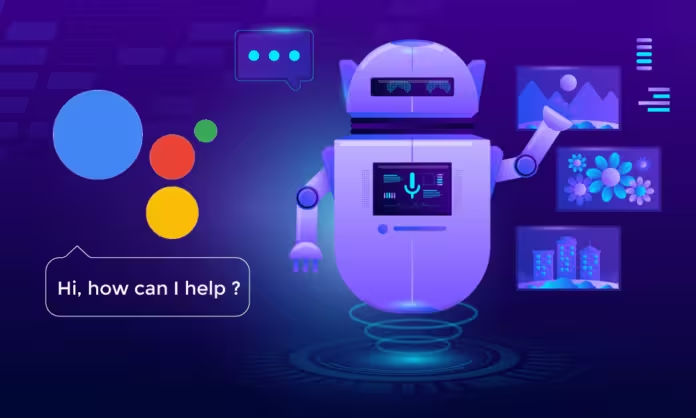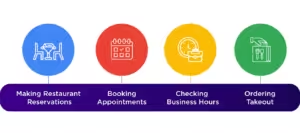Google duplex was introduced to the world in 2018 by Google CEO Sundar Pichai. Since then, the term “Google Duplex” has been cited as “calls from Google Assistant”. This service uses an AI- driven voice on the phone call to make phone appointments as per the user but the interaction with the user during the process is none. The AI is smart and competent enough to understand the person on the other end and respond correctly to any questions asked while sounding like a typical human by adding “ums” and pauses. Sounds cool, right? Well, we will explore the features, availability, advantages and challenges that this technology has to offer.
What is Google Duplex, and How Can You Use It?
In simple terms, it is an AI system that helps you complete tasks like booking appointments, making restaurant reservations, or even checking business hours—all through natural-sounding phone calls. When it was introduced in 2018, the world was stunned by how seamlessly it interacted with humans on the other end of the line. Duplex can understand complex sentences, fast speech, and even nuances like interruptions, all while maintaining a natural, conversational tone.
It leverages Google Assistant, which powers most smart devices, to execute these phone-based tasks autonomously. Unlike traditional voice assistants, Duplex doesn’t just deliver scripted responses. It can actually engage in conversations, ask follow-up questions, and respond intelligently to human prompts.
How Does Google Duplex Work?
It uses a mixture of advanced natural language processing (NLP) and deep learning to carry out these tasks. The system is trained to understand different speech patterns, accents, and the context of a conversation. Once you ask Google Assistant to complete a task, such as booking a table at your favorite restaurant, it uses Duplex to call the establishment and handle the entire conversation for you.
How does Google Duplex work?
- Initiating a Request: You can ask Google Assistant to make a specific booking or appointment, for instance, “Hey Google, book a table for two at 7 PM at [Restaurant Name].”
- Duplex Takes Over: Once your request is received, Google Duplex makes the phone call. The system introduces itself as a virtual assistant, though it sounds incredibly human. It can handle real-time responses, such as if the restaurant asks for a different time or offers options for availability.
- Completion: After confirming the details, Duplex will notify you of the completed task, providing the booking confirmation or updated information.
Duplex’s strength lies in its ability to understand conversational speech and respond like a human would. It also has the ability to recognize when it’s interacting with a machine (e.g., automated answering services) and adjusts accordingly. Duplex ensures that the conversation flows naturally, which reduces the chances of the person on the other side realizing they’re speaking with AI.
What Can You Use Google Duplex For?
At its core, it was designed to handle simple but time-consuming tasks. However, its capabilities have expanded over time. Some of the most common ways you can use the google duplex are listed below:
- Making Restaurant Reservations
Imagine you’re swamped with work and need to secure a dinner reservation. Instead of calling yourself, you can instruct Google Assistant to handle it. Google Duplex will make the call, navigate through various questions like availability, and confirm your booking—saving you time and hassle.
- Booking Appointments
From doctor’s appointments to haircuts, Google Duplex can manage your personal scheduling needs. This feature is particularly handy when you’re dealing with businesses that may not offer online booking. Simply tell Google Assistant the time and place, and Duplex will take care of the rest.
- Checking Business Hours
Instead of browsing through different websites or trying to figure out holiday schedules, Duplex can call businesses directly to verify their hours of operation. It’s especially helpful when hours change during holidays or special events.
- Ordering Takeout
In some cases, Duplex can also assist with placing takeout orders. It can interact with restaurant staff to clarify menu options, pricing, and pick-up times.
Privacy and Ethical Concerns
As groundbreaking as Google Duplex is, it’s not without its critics. One concern is transparency—should the person on the other end of the call know they’re talking to a machine? Google addressed this by ensuring that Duplex identifies itself as an automated system at the start of every call. There’s also the question of data privacy. Like other AI tools, Duplex collects data to improve its performance, which raises concerns about how this information is used and stored.
To alleviate these worries, Google has built privacy safeguards into the system, ensuring that the calls are encrypted and that users have control over how their data is used.
Is Google Duplex Available to Everyone?
Currently, Google Duplex is available in select regions and supports a handful of languages. It’s integrated into Google Assistant on most Android and iOS devices. However, the availability of certain features—like restaurant bookings—may vary depending on your location.
To check if Duplex is available for you, simply ask Google Assistant to complete a task like booking a table or checking hours. If supported, the system will use Duplex to carry out the request.
The Future of Google Duplex
The future of Google Duplex looks incredibly promising. Google is continuously enhancing its AI capabilities, and we can expect Duplex to handle more complex tasks in the coming years. It’s likely that Duplex will be integrated into various industries, from customer service to healthcare, making daily life easier and more efficient for users.
Conclusion
In a world where efficiency is key, Google Duplex stands out as a revolutionary tool that saves time and effort. Whether you’re making reservations, booking appointments, or verifying business hours, this AI system makes mundane tasks simpler by acting like a real human assistant. While still in its early stages, it has the potential to change the way we interact with businesses, automating processes while maintaining a personal touch.
To know more visit us at YourTechDiet!
Read More:


